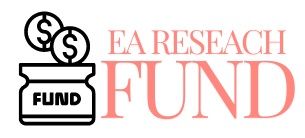Choose Your Best Options in the Refund Tracking

To promote the neutrality of the tax system, capital income should be taxed in the same way as labor income. In this way, there is no incentive to present labor income as capital income. The problem is that capital is more mobile than labor. Capital providers are often looking for the highest return on capital.
With capital income tax that is (internationally) high, the relative return on capital is lower. The provider of capital will then move the capital abroad or pass the costs of the capital income tax on to the more immobile production factor labor by lowering real wages. Therefore, it is generally advised to tax capital income lower than labor income. A dual tax system where labor and capital income is taxed separately is an economically efficient way to shape this. Such a system has been introduced in most Scandinavian countries. As you submit the tax you can also go for the track my refund option as well.
Dual system
Partly on the basis of the above insights, many economists argue for a dual tax system. Some Scandinavian countries have introduced such a system in recent decades. A dual system consists of a progressive income tax and a lower, flat capital income tax. All capital income is then ideally taxed equally and all costs of obtaining the capital and losses can be deducted from it.
- In addition, capital income is prevented from being taxed twice by aligning capital income tax with corporate tax. To ensure neutrality in treatment of labor income and capital income, self-employed and small business owners are assigned a capital income based on a flat rate return on capital, with the remainder taxed as labor income.
A dual tax system has some important advantages. First, the lower tax rate on capital income prevents an outflow of capital abroad. In addition, a dual system leads to less disruption between choices of company forms (independent company, private or open company) and between capital forms (such as own home, shares, dividend). Finally, the introduction of a dual system in many countries makes it easier to achieve uniform (European) corporate taxation in the future.
The introduction of a dual system in countries such as Norway and Denmark shows that it is also feasible in practice. In addition, tax revenues from capital appear to have increased in Denmark, for example, after the introduction of the system.
Real estate tax
When all capital income is taxed, there seems little need to impose any additional tax on capital itself; after all, the accumulation of assets is already taxed. However, the economic literature shows that taxes on certain capital components are so little disruptive that it is economically efficient to impose an additional tax on them. This mainly applies to a property tax. A real estate tax hardly disrupts economic behavior, as it hardly affects employment, labor supply, production and investment. And due to the immobility of real estate, the possibility of flight abroad is excluded and the visibility makes the tax difficult to avoid.






